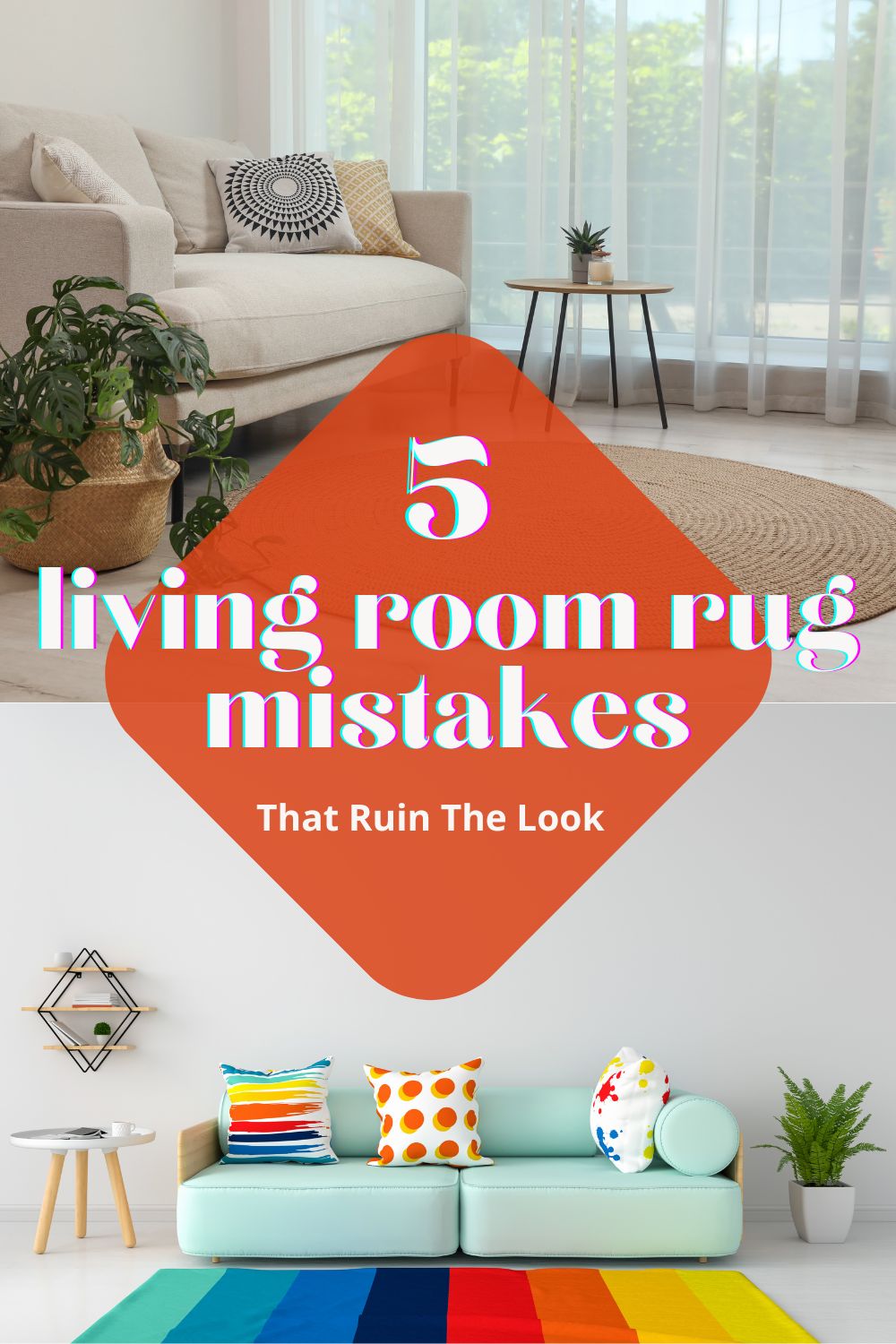5 Living Room Rug Mistakes That Ruin the Look
A well-chosen rug can tie a room together, adding warmth, texture, and style to your living space. However, common rug mistakes can disrupt the harmony of your design. Here are five living room rug mistakes to avoid, along with solutions to enhance your room’s appeal:
1. Choosing a Rug That’s Too Small

The Mistake: Selecting a rug that doesn’t properly define the seating area.
How to Fix It:
- Opt for a rug large enough to accommodate all furniture legs in the seating area
- In open-plan spaces, use the rug to clearly delineate the living room zone
- Consider layering a smaller statement rug over a larger, neutral one for added dimension
2. Neglecting Rug Placement in Relation to Doors

The Mistake: Positioning rugs in a way that interferes with door swings or creates tripping hazards.
How to Fix It:
- Ensure rugs are placed at least 2 inches away from doorways
- Use rug pads with non-slip backing to prevent shifting and bunching
- Consider door swing arcs when planning rug placement to avoid obstruction
3. Ignoring the Room’s Traffic Patterns

The Mistake: Placing rugs in high-traffic areas without considering wear and tear.
How to Fix It:
- Use durable materials like wool or synthetic blends in high-traffic zones
- Consider using runners or smaller area rugs to protect main pathways
- Rotate rugs periodically to ensure even wear and extend their lifespan
4. Mismatching Rug Texture with Room Function

The Mistake: Choosing a rug texture that doesn’t align with the room’s use.
How to Fix It:
- Opt for low-pile rugs in areas with frequent foot traffic or where chairs need to slide easily
- Use plush, high-pile rugs in cozy reading nooks or less-trafficked areas
- Consider indoor-outdoor rugs for spaces prone to spills or in homes with pets
5. Overlooking the Rug’s Relationship with Wall Art

The Mistake: Failing to coordinate the rug design with wall decor, creating visual discord.
How to Fix It:
- Choose a rug that complements rather than competes with statement wall art
- Use the rug to echo colors or patterns found in your wall decor
- If both the rug and wall art are bold, ensure they share a common color palette to create harmony
By avoiding these rug mistakes, you can create a living room that feels cohesive, balanced, and thoughtfully designed. Remember, a rug is more than just a floor covering – it’s a key design element that can dramatically impact the overall look and feel of your space.
When selecting and placing a rug, consider not only its aesthetic appeal but also its practical function within the room. The right rug can anchor your furniture, define spaces, and add that perfect finishing touch to your living room design.

